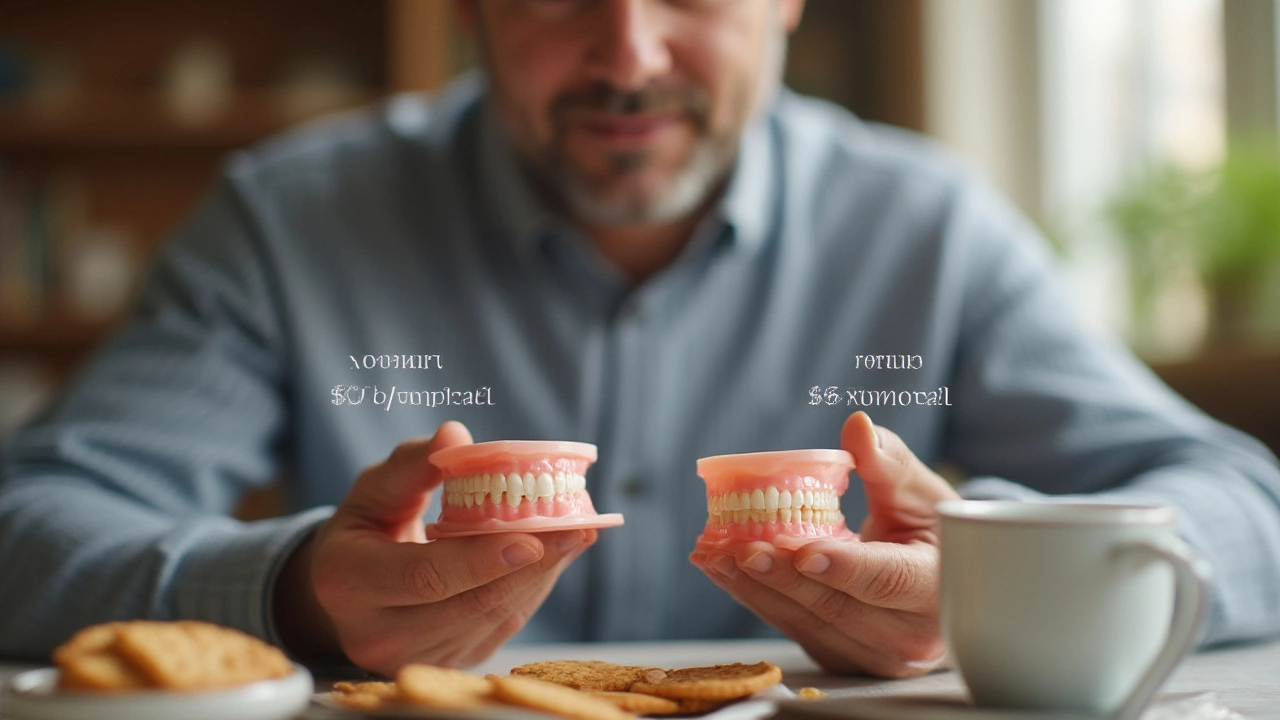
That first morning you wake up, look in the mirror, and notice a gap where a tooth used to be—it messes with you. You might joke about pirates or hockey players with missing teeth, but when it’s your own smile, it hits different. Too many people think fixing it is out of reach. Turns out, you don’t have to drain your savings or sell a kidney to get your grin back. With a little info and some straight talk about options, replacing a lost tooth can be a lot more doable (and less scary) than you’re picturing.
Why Replacing a Missing Tooth Matters More Than You Think
Some folks shrug off a missing tooth, especially in the back where nobody sees. But here’s a thing nobody tells you—your other teeth notice. When one leaves the lineup, the rest start shifting like bored kids at assembly. This mischief messes with your bite, gives you jaw pain you didn’t sign up for, and can even mess up how you talk. On top of that, chewing gets tricky. You might start avoiding tough foods, which honestly is a fast track to digestive drama and nutrition gaps.
But it gets weirder. Did you know your jawbone starts to shrink when it’s not “exercised” by a tooth root? That shrinking (doctors call it bone resorption) can change your whole face shape, giving an older, saggy look—even if you’re nowhere close to grandma years. A missing tooth can also make you self-conscious or less likely to smile—and that actually has a real effect on mental health. Did you know smiling releases endorphins, the ‘happy’ chemicals? If you’re hiding your smile, you’re literally getting less joy throughout the day. Small thing, big impact.
If you think you can “just live with it,” think again. Not filling the gap can actually make future dental fixes costlier or trickier. Dentists see it all the time: a $500 fix ignored turns into a $5,000 mouth project in a few years. One dental survey from 2022 showed that about 32% of adults admitted to postponing care due to cost, only to pay more later on. If you get proactive, you save more—promise.
Here’s a quick fact: according to the American College of Prosthodontists, nearly 178 million Americans are missing at least one tooth. You’re not alone in this. But only a fraction are treating it early. And that’s where knowing your real options matters.
Affordable Tooth Replacement Options: What Works (and What Might Surprise You)
When you first type “cheapest way to fix missing teeth” into Google, you’ll get bombarded with a million results, most promising miracle dental work. Let’s ignore the gimmicks and look at what actually works—to give you choices, not confusion.
Here are your main, wallet-friendly options:
- Traditional Dentures: These have come a long way since your grandpa’s chunky false teeth. Modern versions are light, less likely to slip, and can look totally real. Full dentures replace an entire row, while partials fill just the gap. They’re the fastest and often cheapest fix, especially for several missing teeth. On average, you’re looking at $600–$1500 for a full set, depending on quality and location.
- Dental Bridges: If your gap has healthy teeth on both sides, bridges use those teeth as anchors for a prosthetic tooth (called a pontic). They’re more secure than removable things, but can be pricier than dentures—usually $1500–$3500 per bridge. Bridges usually don’t last as long as implants, but with good care, you’ll get a decade out of them.
- Removable Partial Dentures: These are like a retainer with one or more teeth on them. Super affordable—sometimes just a few hundred dollars each—and easy to clean. Not everyone loves the feel, but these are a top pick for tight budgets, or as a stop-gap before a more permanent fix.
- Dental Implants: These are the gold standard. A metal post goes in your jaw, then a tooth on top. They look, feel, and chew like real ones. But beware: single implants can cost $3,000–$5,000. The price scares folks off, but if you compare over 20 years (versus replacing other stuff every few years), they might win on long-term value. There’s also something called a “mini implant”—smaller, easier to place, and up to half the price of full ones, if you’re a candidate.
- Temporary or Snap-On Teeth: There’s even a new wave of super-budget options, including snap-on “veneers” or mail-order partials. These might be OK in a pinch (job interview, wedding photos), but don’t expect them to last or feel comfortable for daily meals.
You want a real smile—not a dental disaster. But cost matters! Here’s some real 2025 pricing:
| Tooth Replacement Type | Typical Price Range (USD) | Average Lifespan |
|---|---|---|
| Removable Partial Denture | $300–$1,200 | 5–7 years |
| Traditional Dentures (full) | $600–$1,500 (per arch) | 5–10 years |
| Dental Bridge | $1,500–$3,500 | 7–15 years |
| Single Dental Implant | $3,000–$5,000 | 15–30 years |
One thing to watch out for: “cheap” rarely means “good.” But you don’t need platinum teeth to have a normal, happy life either.

Tips and Insights to Save (and What Dentists Wish You Knew)
Feeling stuck between your bank account and your bite? It’s not as hopeless as it looks. Here’s what most dentists keep in their back pocket but don’t always have time to explain in the chair.
- If you’re missing one tooth and budget is tight, a removable partial denture (sometimes called a flipper tooth) can tide you over for years. It’s far more affordable upfront, and you can keep saving for a more permanent fix down the road.
- If you’re missing several teeth in a row, you can sometimes do a “partial denture” that clicks onto the remaining ones, or a bridge covering the whole gap. Several companies now 3D-print lightweight dentures for under $1,000—shop around and ask your local dentist if they can order from these labs.
- If your dentist suggests an implant but it feels out of reach, ask about “mini implants” (good for smaller gaps and folks with thinner jawbones) or ask about staged payments. Some offices partner with financing companies, letting you space costs over 1–2 years without credit-card level interest.
- Insurance rarely covers a new tooth 100%, but sometimes covers dentures every five years. Medicaid programs in some states do help with basic tooth replacement for adults—be extra persistent asking about what’s covered, as office staff sometimes don’t know the finer details.
- Consider dental schools and teaching clinics. You get supervised care for 30–60% less than standard clinics. Procedures can take longer, but the savings are real.
- Skip “bargain” overseas dental tourism unless you’ve truly checked the clinic’s reputation and infection controls. Fixing botched work is a true nightmare.
- Don’t feel embarrassed about price. Literally one in four adults has trouble affording dental care, according to the ADA Health Policy Institute. You’re definitely not alone in asking for a deal, or wondering about payment plans.
- If you smoke or have untreated gum disease, fix that first. Dentures or implants last way longer in healthy mouths. One study in "The Journal of Prosthetic Dentistry" found that smokers were twice as likely to have denture problems within the first year.
- Digital impressions are now largely replacing those goopy molds—less mess, fewer mistakes. Some clinics even offer at-home impression kits for simple partials, so don’t be shy to ask for these newer, easier options.
If you’re worried about comfort, ask for a trial fitting with a "wax model" of your new teeth, so tweaks can be made before the final version. Modern materials mean today’s dentures can be super thin, and colored to match your real teeth—no one needs to notice a thing.
One hot tip: if you have a Health Savings Account (HSA) or Flexible Spending Account (FSA), you can use those tax-free dollars for nearly all of these options. Not everyone knows this, and it’s a great way to stretch your money further each year.
As Dr. Romesh Nalliah, clinical professor at the University of Michigan Dental School, says: "Affordability shouldn’t mean sacrificing your health. There are solutions in every price range, and the best first step is simply booking a consult—even if you’re not ready to decide yet."
What to Expect: The Process, The Feels, and Keeping Costs Down
Getting new teeth isn’t like buying a new phone. There’s a little more waiting, a bit more fuss, but also more “wow factor” in the end. Here’s a quick peek at what really happens when you commit to replacing a missing tooth on a budget.
Step one is always an evaluation. Expect your dentist to do a quick exam, maybe an X-ray, to check the health of your gums and jaw. Sometimes you’ll need to clear up a little infection or gum disease before anything else—that’s just to make sure your new tooth has a good “home.”
For removable partial dentures or a flipper tooth, they’ll usually take a digital scan (or an old-school mold with putty), then send it off to a dental lab. You might get a temporary version in a week, while the permanent one is built. Fittings are mostly painless, and if something feels off, it’s completely normal to need a tweak or two before it’s perfect.
Getting a bridge takes a little longer. Usually, your dentist shapes the neighboring teeth, takes impressions, and fits you with a temporary bridge. The real one arrives in 2–3 weeks, gets cemented in, and you’re good to chew again. Dental bridges do require reshaping the nearby teeth, which is a factor for long-term health, so weigh your options if those teeth are totally healthy.
If you go the implant route, the process takes months—not days. The implant (metal root) gets placed first, then your jawbone needs to settle in and "hug" it, which is called osseointegration. For single implants, from placement to finished tooth, it’s often 4–6 months—but the results can last decades. This is the priciest, but for many, it’s the last dental bill they see for a long time.
New tech is making it all faster, easier, and—believe it or not—cheaper than ever. Labs that take digital impressions can cut mistakes by 80%, and new resin-based materials can even repair certain dentures or flippers at home with little DIY kits, buying you extra months or years.
And the feels? That moment you look in the mirror and see a full smile again hits hard. It’s not just about vanity. Chewing comes easier. Talking is less awkward. And honestly, most folks say they feel more confident and less "on edge" during everyday conversations. For so many, that first smile is worth every penny and every trip to the dentist.
Here’s something you probably didn’t know—if you’ve had trouble with denture fit in the past (slipping, pressure, soreness), you can now ask for “soft liners”—a squishy layer that makes them grip better and feel more like natural gums. Soft liners cost a bit extra, but lots of people think they’re a game-changer, especially in the lower jaw where movement is common.
The bottom line? You don’t have to wait years—or win the lottery—to get your smile back. Affordable, modern options are out there, and a little research goes a long way. If you take action quickly, keep up on dental checkups, and don’t skip regular cleaning, even the cheapest prosthetics will last way longer and keep you smiling for years to come.